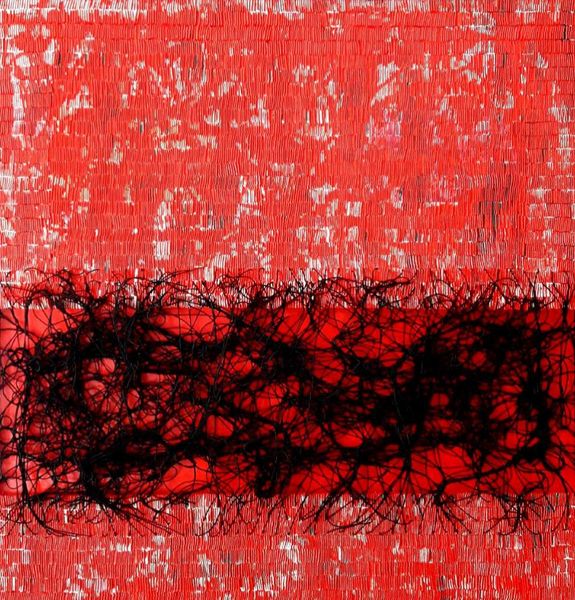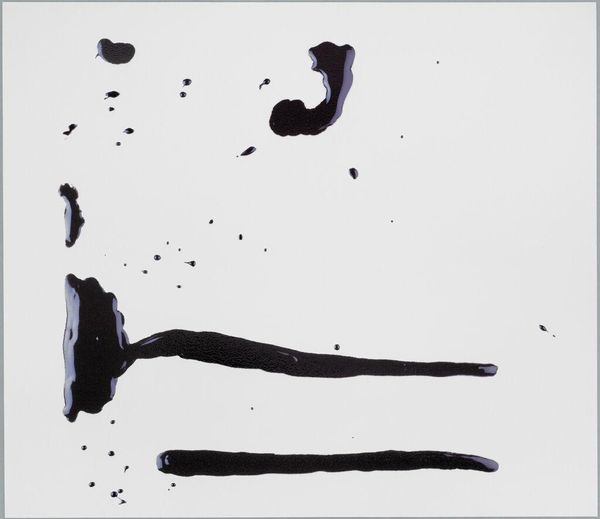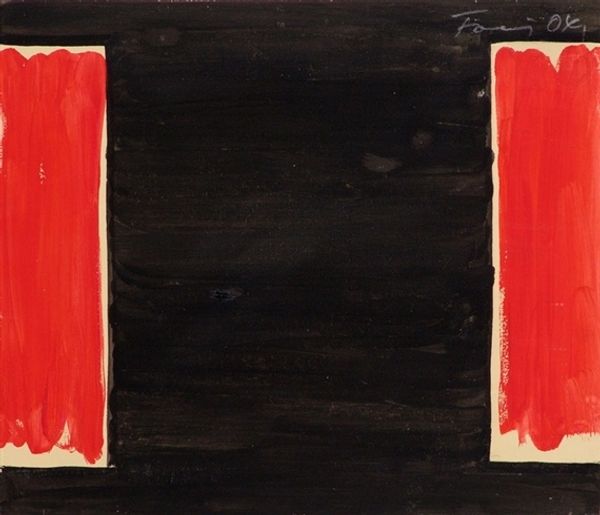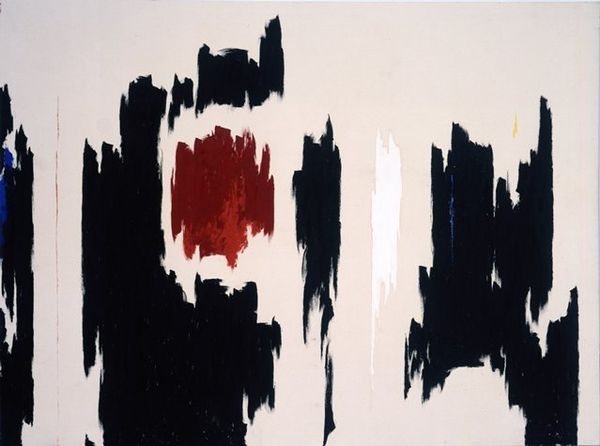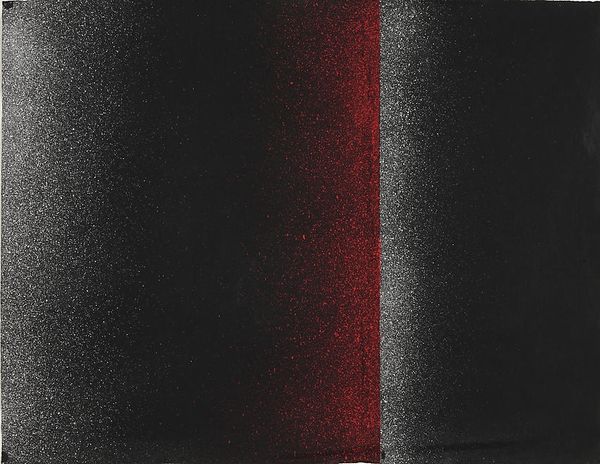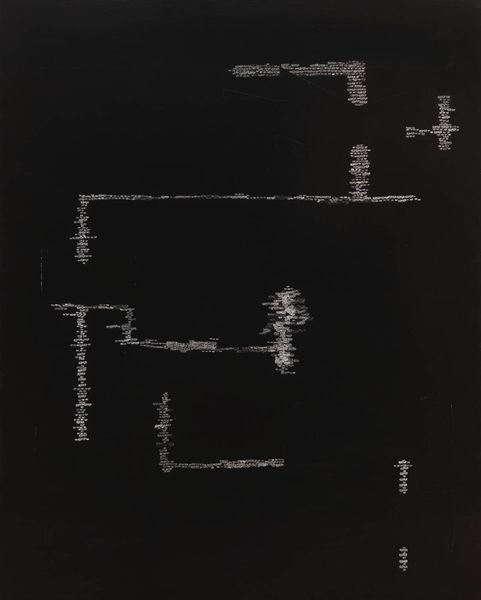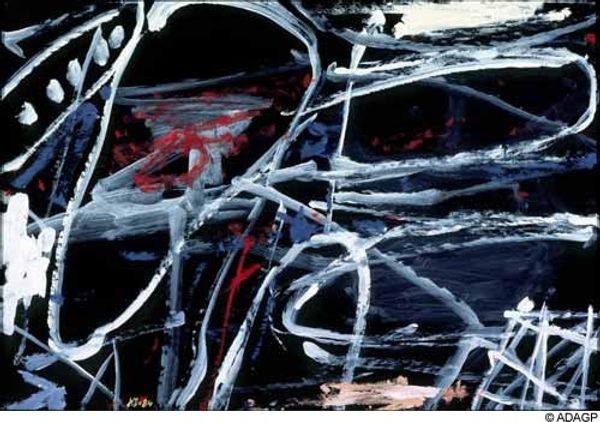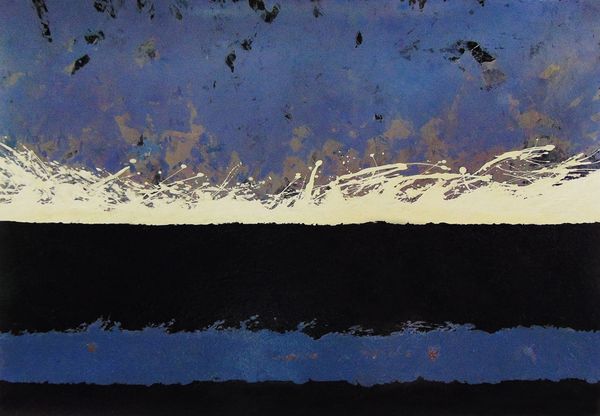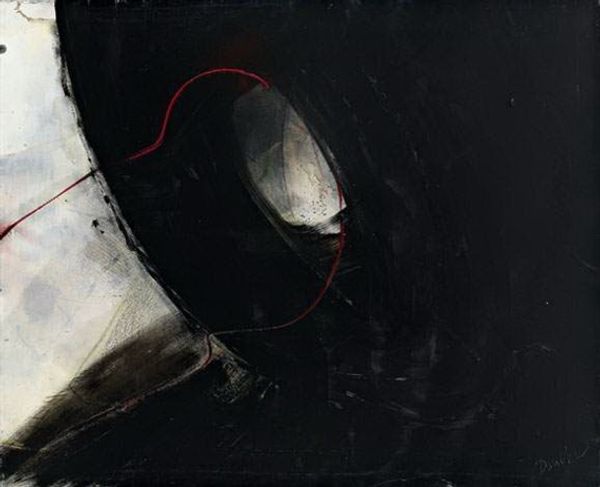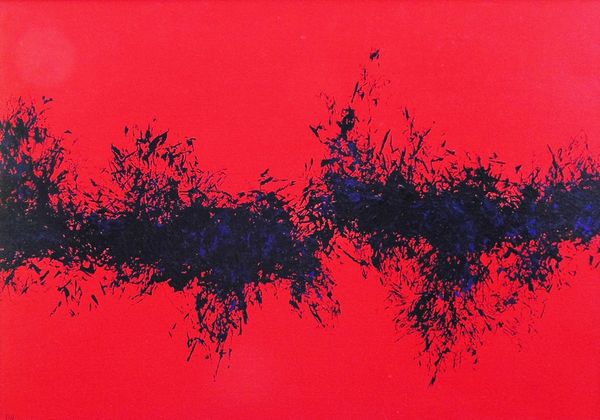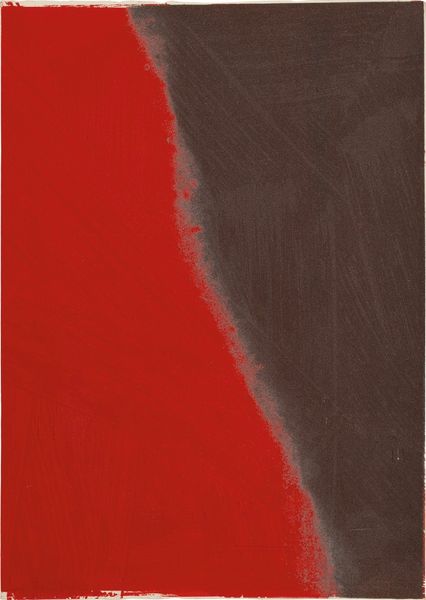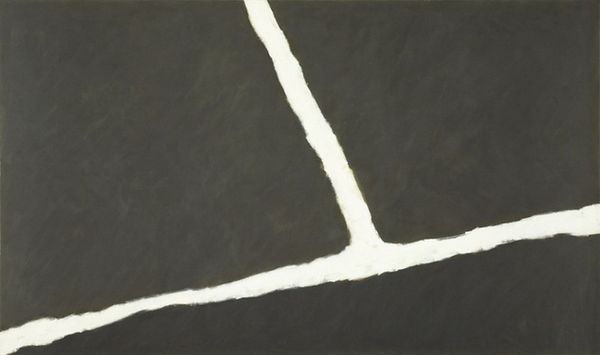
Copyright: Alvaro Lapa,Fair Use
Curator: Editor: Alright, next up is Álvaro Lapa’s "Céline's Notebook," painted in 1990 using acrylic paint. It’s very stark: mostly black, with just a few lines of white and a jagged, almost arterial red cutting across the middle. What do you see in this piece, beyond the surface level? Curator: It's compelling how Lapa uses this very limited palette to evoke such a strong sense of unease. Consider the sociopolitical landscape of 1990 – the fall of the Berlin Wall, shifting global power dynamics… Do you see any of that anxiety reflected here? Editor: I can see that. There's a tension, for sure. The red line feels almost violent against the black. Like something raw exposed to the world. But why "Céline's Notebook"? Curator: Ah, that’s where it gets interesting. Céline was a controversial figure, often criticized for his antisemitic views. Knowing that, how does it change your perspective of the piece? Editor: Wow, that’s heavy. So, is Lapa engaging with Céline’s work directly, maybe critiquing or reinterpreting it through this abstract expression? Curator: Precisely! Or perhaps exploring the uncomfortable intersection of artistic genius and problematic ideologies. Lapa doesn't offer easy answers; he challenges us to grapple with these complex relationships. The seemingly simple lines take on a much greater weight when we consider the historical context and the loaded reference to Céline. Editor: It really does. It's more than just an abstract composition, it’s a provocation. I would never have picked up on that myself. Curator: Exactly. And that’s the power of art, isn’t it? To spark conversations, challenge assumptions, and force us to confront uncomfortable truths.
Comments
No comments
Be the first to comment and join the conversation on the ultimate creative platform.
